|
TARANTA
( Abyssinian )
(Black-winged)
 It
is the largest species of the 9 existent, and one of the three that shows
sexual dimorphism. The cock has a red forehead, while the forehead of the
hen is completely green. Its size is around 18cm and its weight is around
60-65g, being the cock larger than the hen. It
is the largest species of the 9 existent, and one of the three that shows
sexual dimorphism. The cock has a red forehead, while the forehead of the
hen is completely green. Its size is around 18cm and its weight is around
60-65g, being the cock larger than the hen.
When the chicks birth, they are green, and after the first moult is when
we can differentiate cocks from hens by their phenotype. Young cocks have
black feathers under the wings, and when they become adults the primaries
get also completely black.
They are less sensitive to the cold than the rest of the species, they
prefer the coldest period for breeding. Hens are quite aggressive,
defending furiously their nests as a way of protection, and to show the
cocks their intention of mating. The cocks fly over the hens several
times, from one side to another, going with them to control the nests.
They build the nests carrying little leaf strips, which are carried in
the rump feathers or under the wings. Frequently they use its own feathers
to make the nests, this is a problem because the chicks are injured
because the parents also use their feathers. Sometimes they dig a hollow
on the nest floor, and they put little wood pieces.
As a general rule, they breed only once a year, and the egg-laying is
around 4 eggs. The incubation period lasts 25 days, though sometimes can
last until 29 days.
The emancipation of the chicks is later than the rest of the species, and
it is around 7-8 weeks. When they leave the nests the father continues
feeding them for a long period.
Their diet is a bit different from the rest of lovebirds, this diet must
be rich in calories. They need more sunflowers, hemp seeds and oats than
the rest of the species. Berries, figs, apples and other fresh fruits must
be given as a complement to their diet.
It is a mystery the reason for the death of the chicks in a very big
percentage without a laudable reason for it. This is the reason why
breeders opt for hand feeding.
The known mutation is dark factor. It is also said that cinnamon and
lutino mutations exist, but their existence is not proved.
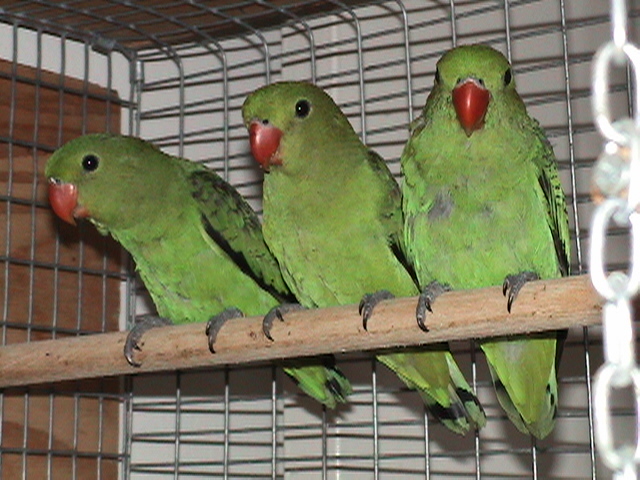
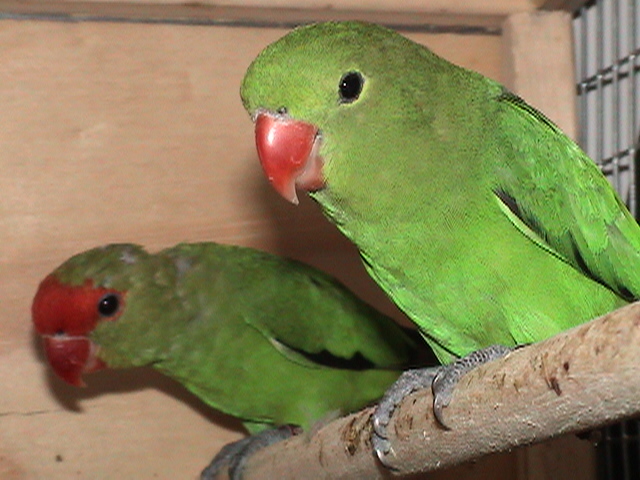
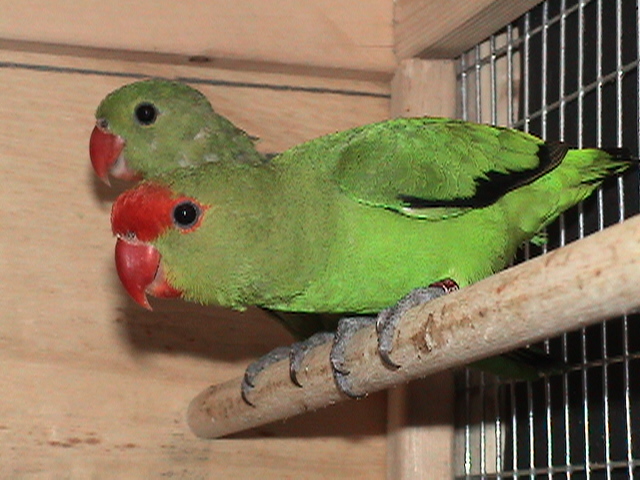



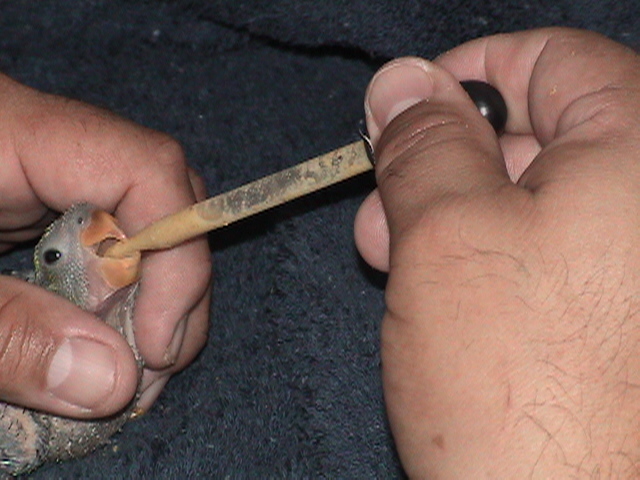
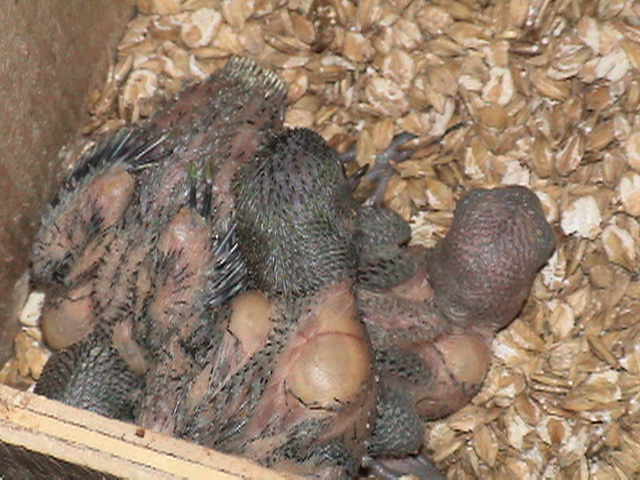

         

|